Know the Full Possibility of You
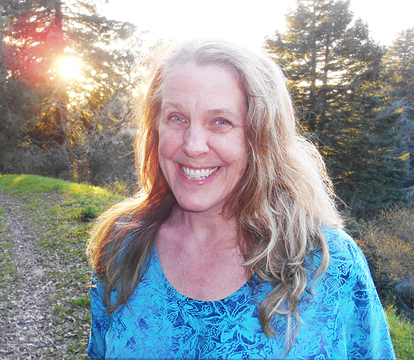 ” It is wisdom to know others;
” It is wisdom to know others;
It is enlightenment to know one’s self.”
— Lao Tzu
Who are you?
The first time someone asked you, “Who are you?” you might reply by saying your name. If someone asked, “Who are you?” a second time, you might state your job title, in order to provide information that helps to set you apart and explain your relationship to others.
If I was asked, “Who are you?” on a college campus, I’d likely mention that I am an alumna, or mention that I have a degree in Physics from UC Berkeley. If asked this question at an airport in France, I’d mention that I’m an American citizen who lives in California. When asked this question on a TV interview, I’d say I’m a best-selling author of the books, Quantum Jumps and Reality Shifts. If asked this question by a meditation master, I’d reply, “awareness.” While each of my answers could be considered accurate and true, a good case could also be made that none of these descriptions is who Ireally am—since there is more to me than just my name, job title, citizenship, and other descriptors. And based on what I have learned about the way we exist in a superposition of states—as can be seen in the doubling of the efficacy of the placebo effect over the past thirty years—I am aware of the importance of keeping a positive, open mind to considering myself to be doing better than how any given label or description might seemingly confine me.
One of the things we most take for granted is knowing who we are—yet this is one of the biggest areas in which we have room to increase our understanding of what is possible in our lives. People sometimes discover that they can do things they didn’t think possible—when circumstances require them to handle situations they’ve never previously faced. In an emergency, people have been known to be able to perform amazing feats of courage and strength, such as lifting a heavy car off of someone else. When some people have transformative life experiences, they often realize there is nothing holding them back from pursuing the life of their dreams, seeking out new kinds of friends, activities, and work.
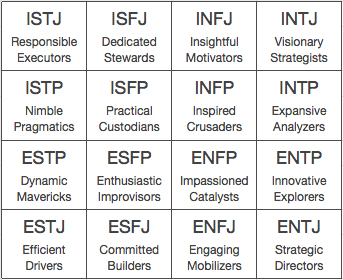 One very important quality that personality tests don’t describe is what level of consciousness you are accessing at any particular moment. Such levels include: waking, dreaming, deep sleep, and a sense of oneness awareness—with transitional levels in between. Some yogis and martial artists are capable of developing the ability through meditation and internal energy work of changing their level of consciousness, allowing them to interact with their environment with harmonious grace and ease. While we move between these levels of consciousness on a regular basis, we seldom give much thought to how we engage with these levels of consciousness, or who and what we’re connecting with while we’re dreaming or daydreaming, for example. What scientists can measure is that they associate some of these stages of consciousness with brain waves, with the lowest stages of unconsciousness corresponding with Delta brainwaves in the 0.5 to 4 Hz frequency range, and Theta brainwaves in the 4 to 8 Hz range. We consider ordinary waking consciousness to correspond with Alpha brainwaves between 8 to 13 Hz, and Beta brainwaves between 13 to 30 Hz. Gamma brainwaves at 30 to 42 Hz, are associated with extreme abilities to focus, and high states of ecstasy.Some employers administer personality tests, such as the Myers-Briggs Type Indicator (MBTI) in hopes of establishing a better fit between applicants and job openings. The idea is that such tests can help sort out tendencies people have toward being an introvert or extrovert, senser or intuitive, thinker or feeler, and judger or perceiver— providing us with clues as to how people with shared personality characteristics tend to respond to various situations. As tempting as it might be to get your MBTI score and think, “At last I know who I am! I am a ______,” filling in blank with one of the sixteen MBTI personality types, such as “INFJ” for example, for “Introverted Intuitive Feeling Judger”, psychologists are finding that people can sometimes move around from personality type to personality type, such as becoming more extroverted.
One very important quality that personality tests don’t describe is what level of consciousness you are accessing at any particular moment. Such levels include: waking, dreaming, deep sleep, and a sense of oneness awareness—with transitional levels in between. Some yogis and martial artists are capable of developing the ability through meditation and internal energy work of changing their level of consciousness, allowing them to interact with their environment with harmonious grace and ease. While we move between these levels of consciousness on a regular basis, we seldom give much thought to how we engage with these levels of consciousness, or who and what we’re connecting with while we’re dreaming or daydreaming, for example. What scientists can measure is that they associate some of these stages of consciousness with brain waves, with the lowest stages of unconsciousness corresponding with Delta brainwaves in the 0.5 to 4 Hz frequency range, and Theta brainwaves in the 4 to 8 Hz range. We consider ordinary waking consciousness to correspond with Alpha brainwaves between 8 to 13 Hz, and Beta brainwaves between 13 to 30 Hz. Gamma brainwaves at 30 to 42 Hz, are associated with extreme abilities to focus, and high states of ecstasy.Some employers administer personality tests, such as the Myers-Briggs Type Indicator (MBTI) in hopes of establishing a better fit between applicants and job openings. The idea is that such tests can help sort out tendencies people have toward being an introvert or extrovert, senser or intuitive, thinker or feeler, and judger or perceiver— providing us with clues as to how people with shared personality characteristics tend to respond to various situations. As tempting as it might be to get your MBTI score and think, “At last I know who I am! I am a ______,” filling in blank with one of the sixteen MBTI personality types, such as “INFJ” for example, for “Introverted Intuitive Feeling Judger”, psychologists are finding that people can sometimes move around from personality type to personality type, such as becoming more extroverted.
The question of who you are takes on tremendous importance at this point in history—the dawning of the Quantum Age. Due to the required inclusion of a conscious observer at the heart of quantum physics, it’s no longer possible for scientists to assume such things as that there can be a purely objective observer. In actuality, observers are known to influence every observation they make, simply by their presence and what the observer is paying attention to. And how we pay attention to ourselves can make a tremendous difference in our health, happiness, and wellbeing.
When I ask myself the question, “Who are you?” I discover I am aware of myself on many levels of being. I realize that I am much more than simply my gender, my age, my profession, my experiences, and my socio-economic information. I am much more than my types of expertise. I am more than my skills, more than my hobbies, more than my bank balance. I’m more than my nationality, more than my college degrees, and more than any other types of certifications I’ve received. There are levels of “me” that can be subsets of my body—such as “being in my head” and thinking about ideas like these. There are levels of my being that are aware of living my life for love, with tremendous heart-centeredness. There are also levels of “me” that include many possible superpositions of states of me—some that I’m more aware of than others. And there are levels of “me” based on awareness of my being entangled with and part of much more than my physical body right here, right now. With so many different answers to who I am, I’m glad to discover that the less limited and the more expansive I am with my answer to the question, “Who are you?” the more enjoyable and fulfilling my life becomes.
The video version of this blog post can be found on YouTube at: http://youtu.be/bPHVWDo91jk
Cynthia Sue Larson is the best-selling author of six books, including Quantum Jumps. Cynthia has a degree in Physics from UC Berkeley, and discusses consciousness and quantum physics on numerous shows including the History Channel, Coast to Coast AM, and BBC. You can subscribe to Cynthia’s free monthly ezine at: http://www.RealityShifters.com
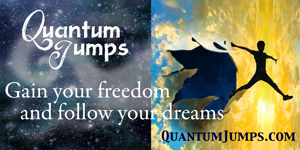








 I noted on a morning walk this month while walking our family dog on a route we have been taking quite often on our daily walks over the last several years, we passed a house marked with a whimsical sign:”Place Trilling.”
I noted on a morning walk this month while walking our family dog on a route we have been taking quite often on our daily walks over the last several years, we passed a house marked with a whimsical sign:”Place Trilling.”

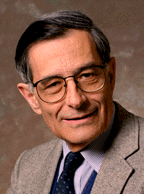


 You can better appreciate the origins of our current Information Age by taking a look at the first classical computers. Our first computers became commonplace in the 1930s and 1940s, with the hefty accomplishments of the ENIAC computer’s memorable debut. This gigantic milestone computer weighed in at thirty metric tons. Although it needed to be rewired in order to be reprogrammed initially and operated without any operating system, the ENIAC captured public attention and helped popularize the idea of computing as essential to everyday business and life. The first computers changed peoples’ lives and way of thinking far beyond what was originally envisioned, making the world better connected and informed than at any previous point in history.
You can better appreciate the origins of our current Information Age by taking a look at the first classical computers. Our first computers became commonplace in the 1930s and 1940s, with the hefty accomplishments of the ENIAC computer’s memorable debut. This gigantic milestone computer weighed in at thirty metric tons. Although it needed to be rewired in order to be reprogrammed initially and operated without any operating system, the ENIAC captured public attention and helped popularize the idea of computing as essential to everyday business and life. The first computers changed peoples’ lives and way of thinking far beyond what was originally envisioned, making the world better connected and informed than at any previous point in history. The Impact of Quantum Computing on Daily Life
The Impact of Quantum Computing on Daily Life


 I was just interviewed by Lilou Macé in my garden for her
I was just interviewed by Lilou Macé in my garden for her 






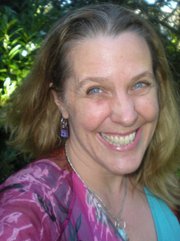
Recent Comments